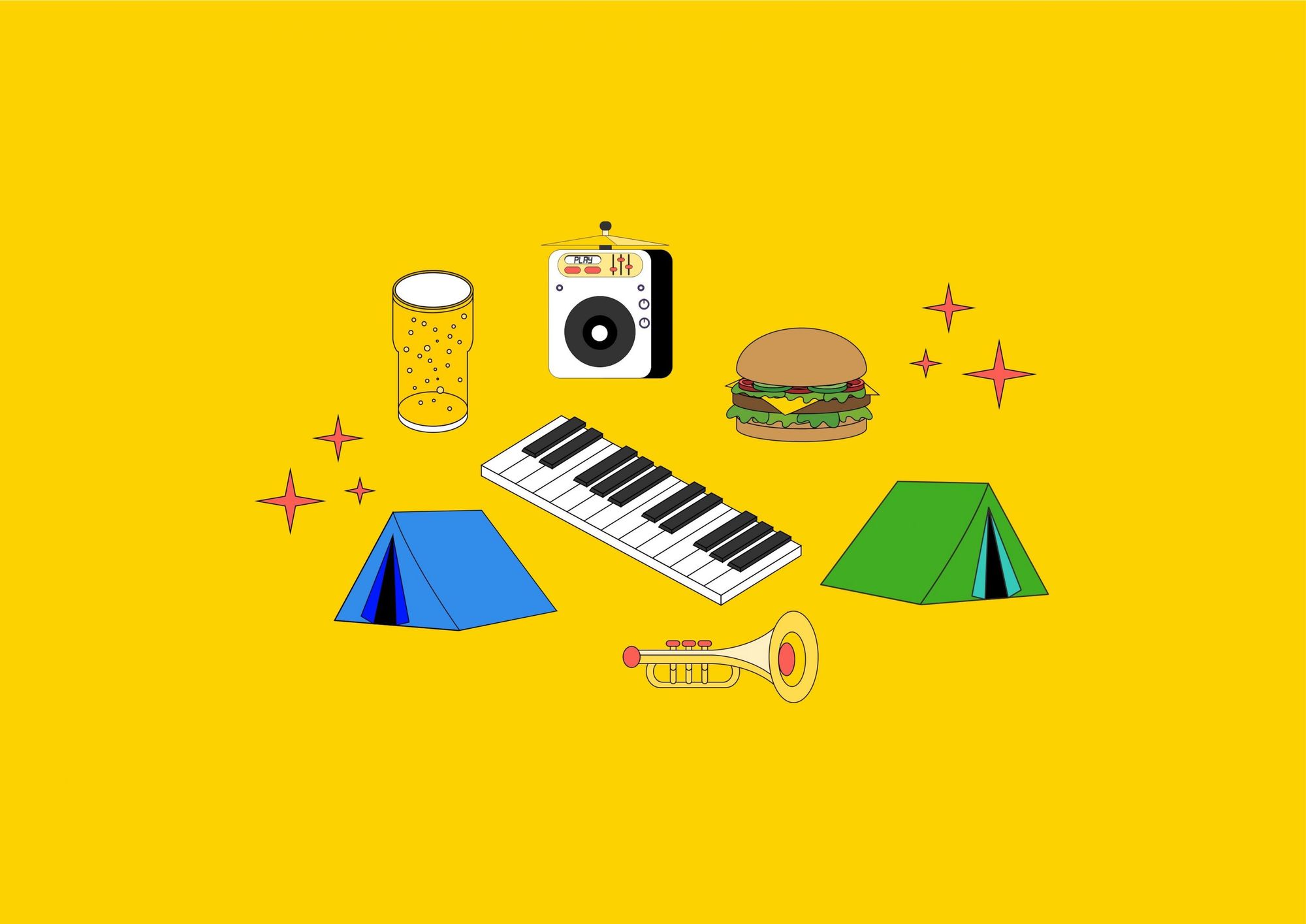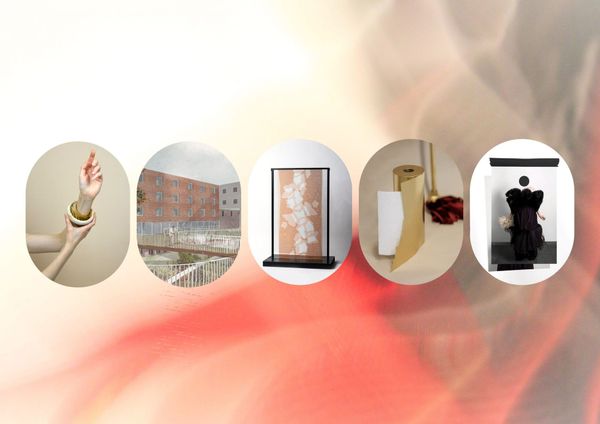Hospitality has been one of the hardest-hit sectors by the pandemic. Many pubs have gone bankrupt, waiters lost their jobs, and festivals have been canceled. But, this summer, the festival season is back in full swing.
Hungary is famous for its festivals, at least in the CEE region, and today’s conference coverage is from a roundtable discussion of four prominent figures in the industry: Natália Oszkó-Jakab, director of the Valley of Arts Festival, Norbert Lobenwein, founder of VOLT Festival, Gergely Papp, chief organizer of MCC Feszt, and Péter Miklósvölgyi, managing director of Campus Festival.
The four speakers represented four unique festivals. Oszkó-Jakab mentioned in the beginning that the core of the Valley of Arts is the community of returning visitors. She sees the project as a cultural melting pot more than anything else. Perhaps what sets Valley of Arts apart from other festivals is that all generations can find a program for themselves, whether on the Panorama stage or in a baby event. The encounter of different art genres and styles has a synergistic effect, and it is quite likely that even if you come for a pop concert, you end up spending most of your time folk dancing.
According to Lobenwein, the distinctiveness of VOLT derives from its three-decades-long history, which gives the festival a unique prestige. With such a reputation, the greatest challenge is innovating and raising the bar even higher. So, the organizers of VOLT can never sit back. In contrast, Papp’s MCC Feszt will be held only for the second time this year. As the event cannot draw crowds with its great history, it needs to provide something new; they aim to fill a gap in the festival market by focusing on professional, scientific, and civic topics.
Campus Festival’s uniqueness comes from its strong links with the University of Debrecen and the city of Debrecen itself. Debrecen is one of the fastest-growing Hungarian cities, and the university is one of the largest in the country. This forward-looking mentality can be felt in the festival; nonetheless, the event is not only for locals. Many visitors come each year from all parts of the country and abroad.
Several lists are circulating on the internet of how many festivals are in Hungary. It is for sure that there are a few hundreds of them; some even say half a thousand. Oszkó-Jakab highlighted the role of education by saying that even the Kodály method might influence Hungarians’ love for culture and that we frequently visit festivals during summer. In addition, after the end of the pandemic, there is an increased desire for community programs, so it is not surprising that every summer weekend has 4-5 festivals.
But quality is at least as important as quantity. Lobenwein believes that in Western Europe, organizers do not need gigantic efforts to set up sold-out festivals by providing plenty of different services. In contrast, it takes much creative energy to attract 4-5000 people to a region in Hungary. Papp added that in the 1990s and 2000s, a big hype was built around the term „festival,” that it still has considerable power of branding, so many events may want to ride the wave by labeling themselves as festivals.

Who are Hungarian festivals for? Do they tend to attract a more domestic or international audience? Unsurprisingly, Lobenwein could talk the most about foreign participation. The other three festivals mostly attract Hungarians as the core of Campus Festival are the people from Debrecen; the Valley of Arts primarily offers a theatrical, literary, and lyrics-oriented music program, for which it is essential to understand the Hungarian language, while the MCC Feszt organizes mainly panel discussions and debates.
Lobenwein is involved in several festivals, has insight from multiple angles, and claimed that the picture is more nuanced. The venue of the VOLT Festival is near the Austrian border, the festival’s noise is actually more audible in Austria than in the Hungarian city of Sopron, and there are many international headliners among the performers, like this year the Muse or Bring Me The Horizon. Still, not many internationals travel to Sopron for the VOLT Festival. Perhaps they are discouraged by the many Hungarian bands between the international starts. The Strand Festival primarily targets the Hungarian audience, but Balaton Sound is very popular among foreigners, especially young Belgian and Dutch people who love its exciting program. Still, in Hungary, the most international festival is indisputably Sziget. During the pandemic, the organizers were thinking about a Sziget-themed event, but they soon realized it would make no sense without internationals.
The most interesting part of the discussion was about the evolution of festivals: how did people party 10-20 years ago, and how much will our festival habits change in the future? All four participants agreed that young people are now more demanding and are attracted to more exacting cultural and popular music events during their summer vacation. Miklósvölgyi recalled that 20 years ago, the entrance to a festival was full of punks and beggars, but now these groups have almost completely disappeared. Nonetheless, it is unquestionable that the festivalgoers leaving at dawn will look the same as they did 20 years ago. Papp added that festivals’ audiences become more diverse, with more families and elderly or children attending the events. But he agrees with Miklósvölgyi that the hardcore festivalgoers are not partying differently than they used to.
Nowadays, a festival is often the annual holiday of a family, so the organizers must provide better conditions than 20 years ago. But for Lobenwein, one of the most fascinating differences between today and the early 2000s is diversity. When he was young, music festivals mostly meant rock festivals with cliquey vibes. Nowadays, Sziget’s music is as much electro as hip hop or rock, and fans of different styles hang out together rather than look down on each other. He believes that if we behaved as we do at festivals, we would live in a more peaceful world.
Predicting the future is never easy, but some basic, broad trends can guide us. Design, for example. It was not so important 20 years ago what a beer tent looked like because not everyone had a smartphone to capture and share every moment. Today it is essential for a festival’s brand that what the festivalgoers can see look nice and trendy. Another socially more significant development is the system of reusable cups. Of course, a solution had to be found to the EU regulation banning single-use plastics, but the public opinion is perhaps even more critical. For today’s festivalgoers, sustainability is a crucial aspect.
Festival organizers make predictions and strategies mostly on their own experience and the feedback they receive, but something unforeseen can always come up, such as weather events or pandemics. Oszkó-Jakab points out that this profession is not for the faint-hearted; everything must be prepared, and you must quickly react, but unexpected things can always happen. Thus, Miklósvölgyi believes that God is the main sponsor of festivals since who else could decide whether we can have a party or not.
Just as we still party like our parents did, Oszkó-Jakab believes that in the 2040s, young people will still dance pogo. Papp adds that digitalization, the emerging metaverse, will not be able to provide an as authentic experience as what people want. We may see one or two new online solutions, but digitalization will not dominate the festivals’ future.
As for the near future, the panelists are optimistic. Papp and his team will organize a new event called MCC-sziget (MCC-island), basically a festival with new stages within a festival. But most Hungarian festivals are just getting their ducks in a row this year; after the cancellations of the last two years, they want their visitors to experience again the freedom they had before the pandemic.
This year, the VOLT Festival will take place between 21 and 25 June in Sopron, the Campus Festival between 20 and 24 July in Debrecen, the MCC Feszt between 28 and 30 July in Esztergom, and the Valley of Arts between 22 and 31 July in Kapolcs and the surrounding villages.

BEST OF MOME KIPAK

The magical atmosphere of Alice in Wonderland is evoked by this eyewear store in Ljubljana










